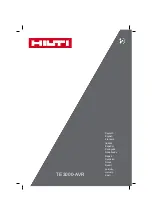
Section 6: Introduction to SCPI commands
Model 2281S-20-6 DC Power Supply and Battery Simulator Reference Manual
6-2
077114601 / March 2019
The examples above show commands that are sent individually. You can also group command
messages when you send them to the instrument. To group a set of commands, separate them with
semicolons. For example, to reset the instrument, enable relative offset, and set a relative offset of
0.5 for the current function in the same message, send the command:
*RST; :SENSe:CURRent:REFerence:STATe ON; :SENSe:CURRent:REFerence 0.5
The colon (
:
) at the beginning of a command is optional. For example, the following commands are
equivalent:
:SENSe:CONCurrent:REFerence:STATe ON
SENSe:CONCurrent:REFerence:STATe ON
Command execution rules
Command execution rules are as follows:
Commands execute in the order that they are presented in the command message.
An invalid command generates an error message and is not executed.
Valid commands that precede an invalid command in a command message are executed.
Valid commands that follow an invalid command in a command message are ignored.
SCPI command programming notes
This section contains general information about using Standard Commands for Programmable
Instruments (SCPI).
SCPI command formatting
This section describes the formatting that this manual uses when discussing SCPI commands.
SCPI command short and long forms
This documentation shows SCPI commands with both uppercase and lowercase letters. The
uppercase letters are the required elements of a command. The lowercase letters are optional.
However, if you choose to include the letters that are shown in lowercase letters, you must include all
of them.
When you send a command to the instrument, letter case is not important
— you can mix uppercase
and lowercase letters in program messages.
For example, you can send the command
:DISPlay:CLEar
in any of the following formats:
:DISPlay:CLEar
:display:clear
:DISP:CLE
:disp:cle
















































